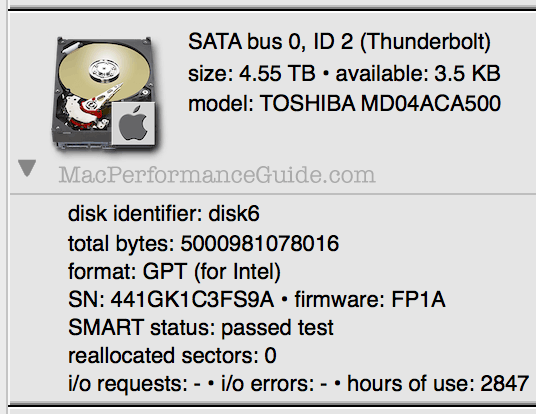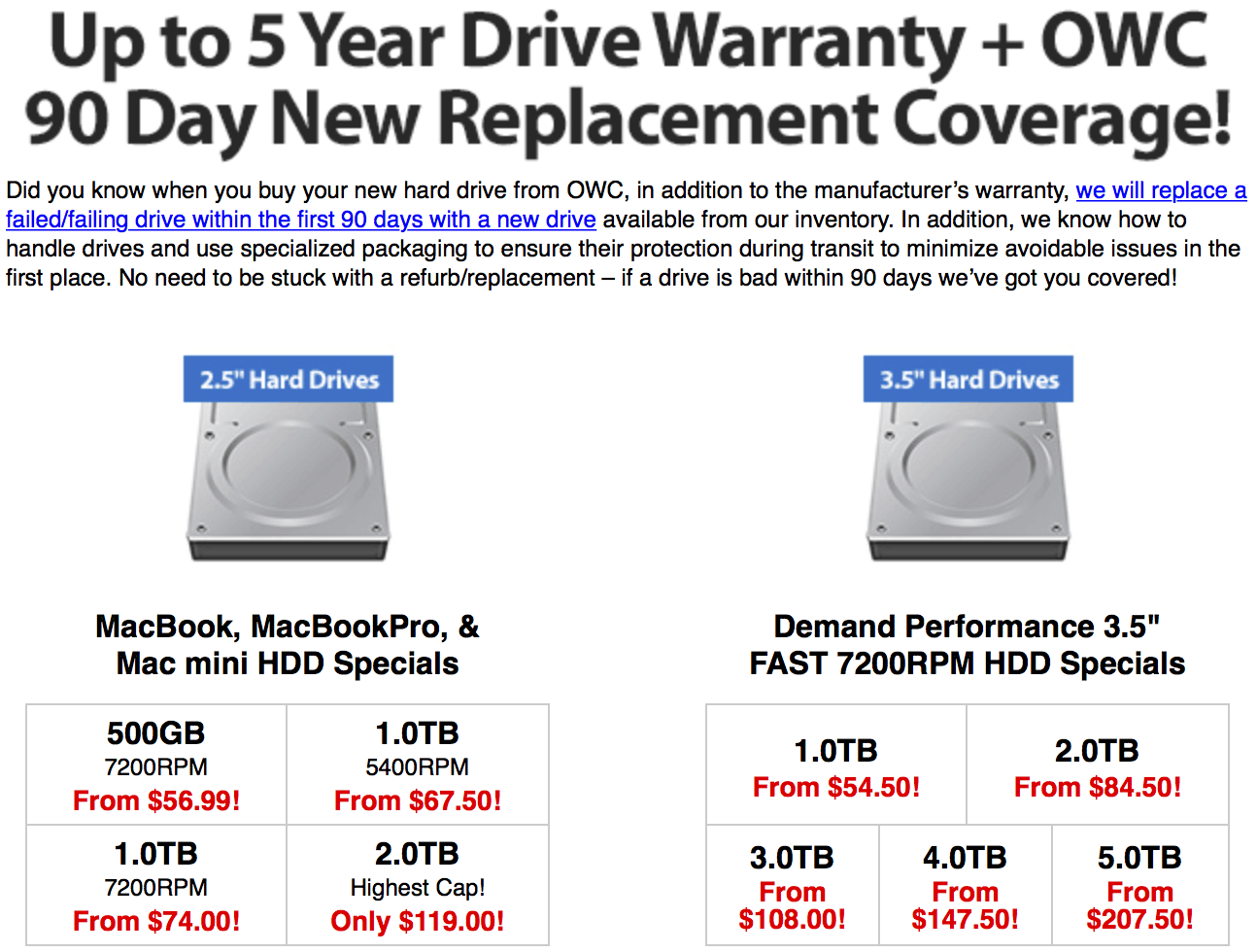Hard Drives: Odds of Failure with Time, When to Upgrade/Replace
Have an older Mac, say 3 years or older with hard drives? If those drives have been spinning much of the day for those years, their odds of failure are rising fast.

Particularly for older Mac Pro systems, having four “spinners” that have been in there for 3+ years means that the likelihood of a failure is an increasing concern (the same applies for external enclosures with drives). Drives used sporadically are probably at much lower risk, provided that the drives have not been spun up/down through many cycles (spin up is a higher stress demand on the drive).
If the drives are in a non fault-tolerant striped RAID-0, failure of just one drive means loss of the volume(s) for that RAID. And even if the RAID is fault-tolerant, e.g., a RAID-1 mirror or RAID-5, getting a matching replacement drive are slim, with new models now having quite different performance characteristics (generally much faster).
It’s not just failure; capacity and performance come to bear; see:
- 4/5/6TB Hard Drives: Higher Capacity Boosts Real-World Performance
- Larger Hard Drives Are Faster Than Smaller Ones
- Why You Need More Space Than You You Need
- The Fastest 2TB Volume is on a 4TB Drive.
When to upgrade
Several strategies come to mind:
- Wait for failure: move to a new set of drives when a failure occurs; once one of a batch fails, it’s a “heads up” on the others. Use the older drives as backup drives (if their capacity makes that not too much of a hassle). This approach has the stress of fixing a problem which could happen at a Very Bad Time, e.g., when backups are stale for a few weeks, or a major deadline approaches.
- Schedule a change: once the drives pass the 3+ year mark, both capacity and performance are now far advanced over the older drives. Move to higher capacity (and possibly fewer drives) with higher performance, evaluating new solutions, such as a Thunderbolt enclosure. This approach is problematic in some ways, in that a new investment into old hardware (e.g. SAS or eSATA) might be the wrong move when a new machine may also be in the cards (with Thunderbolt).
- Switch when the machine changes: the transition might be from, say, an older Mac Pro to a new Mac Pro. Leave the old stuff alone, treating it as a backup moving to a Thunderbolt enclosure, evaluating new capacity and performance options, interaction with SSD solutions, as well as backup design and discipline.
MPG offers consulting for anyone approaching these or other issues, including partitioning, RAID, backup strategy, etc.
Which drives and enclosure?
For modern Macs, MPG strongly recommends at least 4TB drives, even if that much capacity is deemed overkill; see the articles noted above on speed vs capacity.
As of mid 2015, the the drive of choice at MPG is the Hitachi HGST Deskstar 6TB NAS Hard Drive. The 5TB and 4TB Hitachi and Toshiba drives are also good choices. See hard drives at OWC (the OWC 90-day DOA guarantee is a big plus BTW).
Enclosure choice is a no-brainer: MPG has five OWC Thunderbay units for reasons discussed extensively in previous blog posts.
Where to buy?
A new drive fails within 90 days? No fun at all. OWC will replace it with a new one.
Compare that to most vendor policies: send in the drive to the manufacturer, wait 4-6 weeks, get a refurbished (used) replacement.

 diglloydTools™
diglloydTools™












